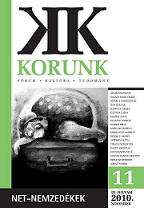Ismerjük meg az "e-idegeneket"!
Meet the "E-Strangers": Predictors of Teenagers' Online-Offline Encounters
Author(s): Monica BarbovskiSubject(s): Cultural Essay, Political Essay, Societal Essay
Published by: Korunk Baráti Társaság
Keywords: adolescents; online-offline dating; predictors; skilled social agents
Summary/Abstract: The purpose of this study is to investigate several factors associated with adolescents' online-offline dating behavior (On-Off Dating), i.e. romantic encounters initiated online and transferred offline at a certain point. Due to the novelty of the topic in the Romanian context, multiple dimensions were taken into consideration. In order to move beyond the victimization perspective, this article relies mostly on the social agency theory that envisions teenagers as skilled and informed actors, who possess the technological, social and communicative competencies which enable them to distinguish between safe and unsafe situations (both online and offline). The sample consisted of 1806 subjects aged 10 to 19 who completed a self-report questionnaire administered in 101 classrooms from secondary schools and high schools in Cluj-Napoca, Romania, in November 2007. Results of the analyses indicate a series of factors significantly associated with this particular practice, with some differences for boys and girls, e.g. parental monitoring, identity management (disclosure and dissimulation), exposure to unsolicited (and deliberate) sexual material and unwanted solicitations online, use of Social Networking Sites (SNS), and several psychosocial factors. Among the most important predictors, e.g. use of Instant Messaging (IM), the amount of time spent online, and positive social self-concept appear to influence both boys' and girls' decision for onlineoffline dating. Other items, like parental monitoring and exposure to sexually explicit content, showed ambivalent relation to the investigated behavior.
Journal: Korunk
- Issue Year: 2010
- Issue No: 11
- Page Range: 37-49
- Page Count: 13
- Language: Hungarian

